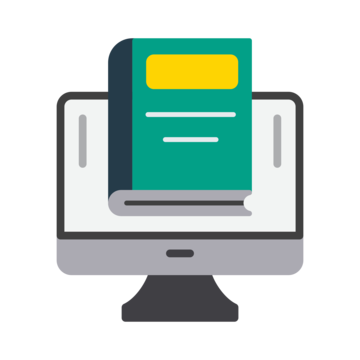Free Practice Microsoft MB-800 Exam Questions 2025
Stay ahead with 100% Free Microsoft Dynamics 365 Business Central Functional Consultant MB-800 Dumps Practice Questions
Case study -
This is a case study. Case studies are not timed separately. You can use as much exam time as you would like to complete each case. However, there may be additional case studies and sections on this exam. You must manage your time to ensure that you are able to complete all questions included on this exam in the time provided.
To answer the questions included in a case study, you will need to reference information that is provided in the case study. Case studies might contain exhibits and other resources that provide more information about the scenario that is described in the case study. Each question is independent of the other questions in this case study.
At the end of this case study, a review screen will appear. This screen allows you to review your answers and to make changes before you move to the next section of the exam. After you begin a new section, you cannot return to this section.
To start the case study -
To display the first question in this case study, click the Next button. Use the buttons in the left pane to explore the content of the case study before you answer the questions. Clicking these buttons displays information such as business requirements, existing environment, and problem statements. If the case study has an All Information tab, note that the information displayed is identical to the information displayed on the subsequent tabs. When you are ready to answer a question, click the Question button to return to the question.
Background -
Northwind Traders is an independent, family-owned business. The company distributes natural pet products in the Northwest region of the country/region. Products are purchased directly from manufacturers and distributed by using its own fleet of trucks.
When the company started, deliveries were within a three-hour radius of the warehouse. Due to regional growth, current deliveries require drivers to stay overnight on some routes. The company plans to open a second warehouse to expand the region and eliminate overnights for route drivers. The company also plans to hire a second group of employees to run operations in this new location. The finance and accounting teams will remain in the original location.
The company uses a third-party system for financials and order management. The finance department stated that the company’s fiscal year begins on July 1 and ends on June 30. The mm/dd/yyyy date format is used.
As part of the expansion, the owner plans to upgrade to an ERP system and use Business Central to fulfill the company requirements and manage growth.
Current environment -
Orders -
• Orders are emailed to customer service and manually keyed into the inventory system.
Pricing and discounts -
• Customer pricing is determined by the customer market type. Customer market types are Retail, Veterinarian, and Breeder. Each customer is associated with only one market type.
• Vendors offer monthly promotions to customers by item, brand, or item category.
• Invoices should show each customer’s base price, the discount amount, and the net price.
Accounts payable -
• The company wants to expand vendor payment options in the new system.
Requirement -
Customers -
• The sales team must be able to do the following:
o Quickly set up new customers with the proper settings based on customer type. o Identify customers by market type. Customer posting groups will be used to identify which market the customer belongs to.
• Base price is determined by the customer market type.
• The sales department should receive a warning when entering the order if a customer is over their credit limit.
Sales -
• Customer discounts are offered for specific time frames by item, brand, or product category. Discounts should be added to sales lines automatically.
• Discounts must post to a unique general ledger (G/L) account.
• The business needs to be able to track revenue by location, market, and product category dimensions. Locations 100 and 200 will be set as default dimensions on the two warehouse locations. Food, treats, toys, and supplies are the required product categories, which will be set as default dimensions on the item cards. Each customer card will have a default market dimension.
• The sales manager wants to delete canceled orders and automatically archive them.
Warehouse -
• Orders will be fulfilled from two possible warehouse locations.
• Product will be transferred between locations by using transfer orders.
Sales invoices -
• Invoices will be posted after delivery.
• Invoices will be emailed to the customer.
• The sales department must be able to quickly correct posted invoices for the following scenarios: o Posted invoices that have not been paid. o Posted invoices that have been paid. o Posted invoices created from sales orders. o Posted invoices not created from sales orders.
Accounting -
• The finance department requires that the company has 12 monthly accounting periods per fiscal year.
• Finance department users must be able to reconcile the accounts receivable (AR) subledger to the G/L account at month end.
• AR department users need the ability to settle and close invoices when customers take payment discounts after the payment discount date has passed. AR users should be allowed to accept or reject the payment tolerance.
• Accounts payable (AP) department users must be able to pay vendors by electronic funds transfer (EFT) and use a payment journal batch named EFT to process payments.
• When viewing G/L entries, the finance and accounting teams must be able to see debits and credits instead of a positive or negative amount.
• The company needs to be able to track expenses by department and location. The departments are sales, operations, and administration.
• AR must be able to correct cash application entries.
Issues -
Payment application -
• Customers may have several stores that are responsible for their own orders and payments.
• Occasionally, AR clerks mistakenly apply payments to the incorrect customer invoice.
Invoicing -
• When items are delivered, customers refuse the items for reasons such as damaged or wrong item.
• After the invoices are posted, they must be corrected, which is time-consuming.
Warehouse -
• The sales department and warehouse managers must have visibility into products that are in the process of being transferred between locations.
Accounts -
• Customer accounts are difficult to view by market type.
• The finance team does not have the ability to report revenue by customer type.
Accounting -
• AR users often find variances between the AR subledger and G/L account.
• Customers often take the payment discount after the payment discount date has passed, leaving open invoices for small amounts.
• The AP department is unable to pay vendors by EFT in the current system.
• Finance and accounting team members have trouble validating postings when they use only the amounts field on G/L entries.
• The finance department is unable to run financial reports by market. All revenue postings must reference a market.
You need to set up customer sales pricing based on the requirements.
Which three actions should you perform? Each correct answer presents part of the solution.
NOTE: Each correct selection is worth one point.
Note: This question is part of a series of questions that present the same scenario. Each question in the series contains a unique solution that might meet the stated goals. Some question sets might have more than one correct solution, while others might not have a correct solution.
After you answer a question in this section, you will NOT be able to return to it. As a result, these questions will not appear in the review screen.
A company uses Dynamics 365 Business Central. The company works with physical goods.
The system must automatically populate the Type field on the document line when a user creates a purchase order.
You need to configure the system.
Solution: On the Vendor Card page, select a document layout and then select a custom layout for reports.
Does the solution meet the goal?
© Copyrights TheExamsLab 2025. All Rights Reserved
We use cookies to ensure your best experience. So we hope you are happy to receive all cookies on the TheExamsLab.


